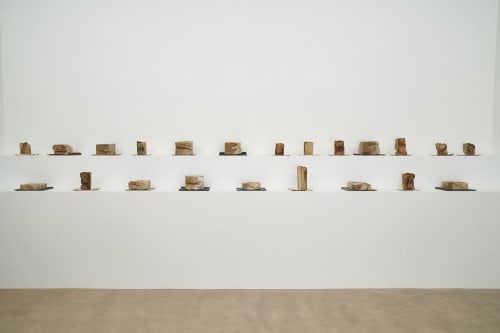Contemporary Indian artist Manish Nai has a rather unique artistic style. He often works with found and discarded objects- recycling old clothes and newspapers, compressing books and various kinds of fabric- transforming them into sculptural pieces that are both overwhelming and playfully nostalgic. His practice finds new forms for old objects through remolding by twisting, cutting, and folding, and abstracting the material to create something new.
We visited Manish Nai’s current exhibit at Galerie Mirchandani + Steinruecke in Mumbai titled ‘Paper City and Ghost Modernity’ last week where his latest works are being showcased. Using a variety of materials ranging paper, second-hand books, wood, cardboard, and copper procured from informal traders and recycling units in different neighbourhoods across Mumbai, Nai’s works evoke an instant curiosity in the viewer.
Within minutes of walking in, one can’t help but be gravitated towards this piece resembling a series of skyscrapers made out of recycled books. Stacked on top of one another with precision, the old faded pages form a beautiful gradient of colour that is characteristic of this artwork.
You can see the stark visual contrasts of Mumbai speaking to you via the monumental height of the towers vis-a-vis the complete lack of space between each individual book. “His fascination with the city really comes out in his artwork,” says Ranjana Steinruecke, who co-founded the gallery in 2006 and has worked closely with Nai for the past 12 years now. “Manish takes his time to find the objects he needs to work with. I’ve known him to drive hours to find a billboard that perfectly captures his vision (see image below), or in this case, sift through thousands of books from raddiwallahs to find the right shape, size and colour he’s looking for.”
Shape and texture rather than content seem to be what Manish Nai is trying to capture through his art. One of the artworks on display is a series of novels and legal handbooks that he has compressed and exposed to water over a period of time. You can see them placed next to one another in what, at first glance, seems to be more like a collection of prehistoric rocks. When I ask Ranjana if there was any reason for his choice of legal books, she shakes her head. “He’s not really interested in the themes or genres of the books, but the structure and outer skin that he finds unique to each one.”

